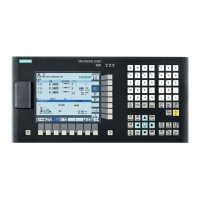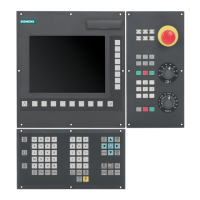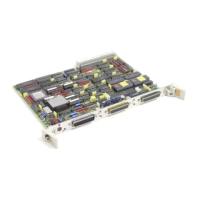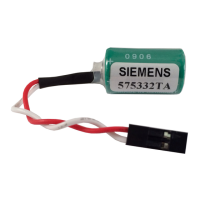Programming principles
1.1 Fundamentals of programming
Turning Part 2: Programming (Siemens instructions)
8 Programming and Operating Manual, 05/2012, 6FC5398-5DP10-0BA0
1.1.3 Word structure and address
Functionality/structure
A word is a block element and mainly constitutes a control command. The word consists of
the following two parts:
● address character: generally a letter
● numerical value: a sequence of digits which with certain addresses can be added by a
sign put in front of the address, and a decimal point.
A positive sign (+) can be omitted.
The following picture shows an example of the word structure.
:RUG :RUG :RUG
$GGUHVV 9DOXH $GGUHVV 9DOXH
$GGUHVV 9DOXH
([DPSOH
([SODQDWLRQ
*
;
)
7UDYHUVHZLWK
/LQHDU
LQWHUSRODWLRQ
3DWKRUHQG
SRVLWLRQIRUWKH
;D[LVPP
)HHGUDWH
PPPLQ
Several address characters
A word can also contain several address letters. In this case, however, the numerical value
must be assigned via the intermediate character "=".
Example: CR=5.23
Additionally, it is also possible to call G functions using a symbolic name (For more
information, refer to the topic "
List of instructions (Page 12)".).
Example: SCALE ; Enable scaling factor
Extended address
With the following addresses, the address is extended by 1 to 4 digits to obtain a higher
number of addresses. In this case, the value must be assigned using an equality sign "=".
R Arithmetic parameters
H H function
I, J, K Interpolation parameters/intermediate point
M Special function M, affecting the spindle with other options
S Spindle speed
Examples: R10=6.234 H5=12.1 I1=32.67 M2=5 S1=400

